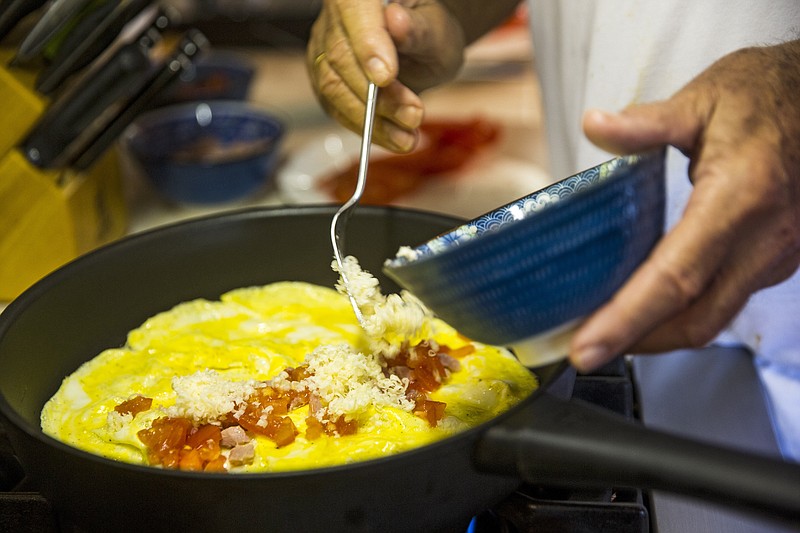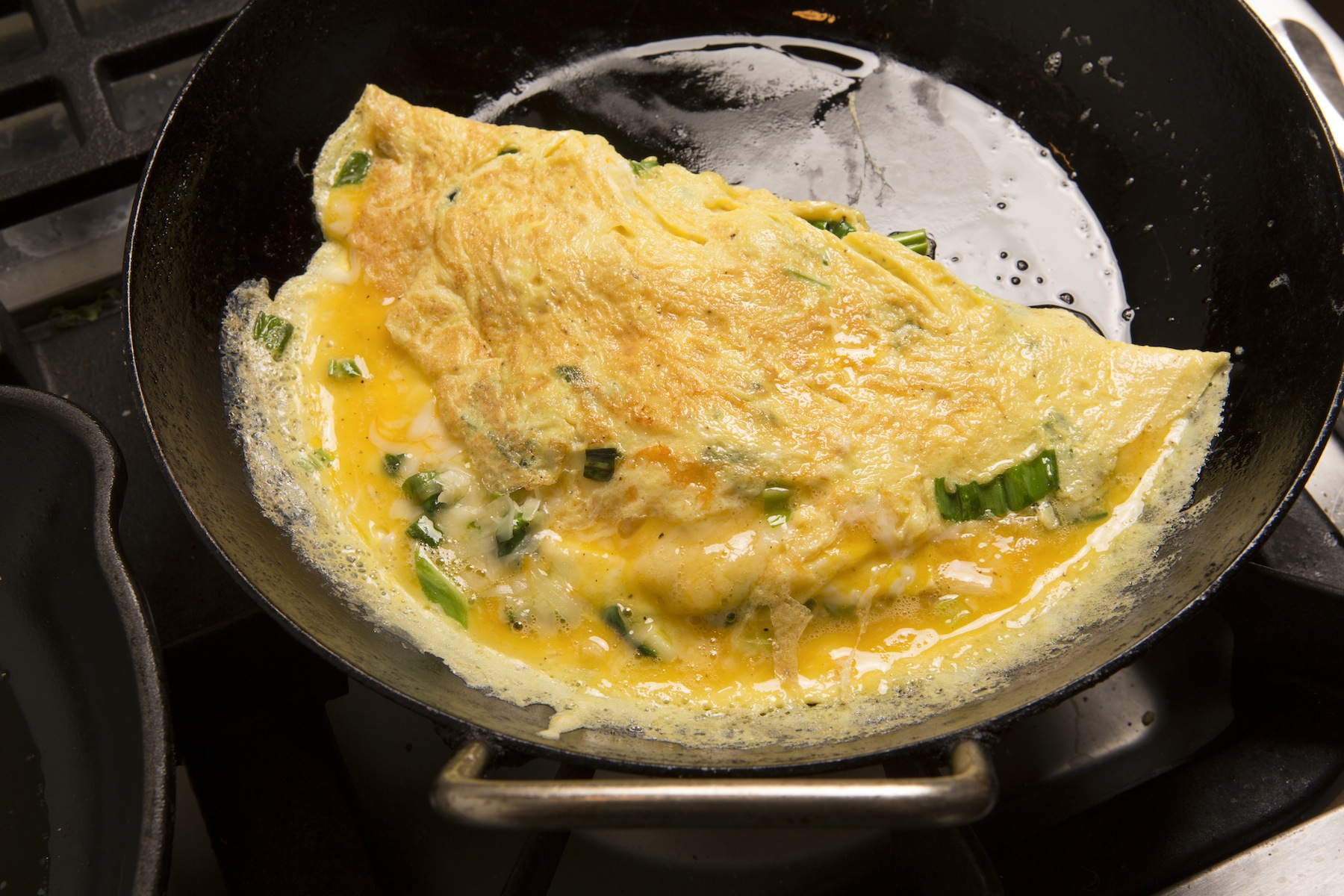There are some weekend days when, although you'd love to go out for brunch, you know you can make whatever you're craving exactly how you want it - and even better than you could get at the restaurant.
That's how Alana Zamora (lanepie on Instagram) feels about omelets. She works the night shift as an intensive care unit nurse, so her breakfast time is all over the place. Omelets, her specialty, are often on the menu, no matter the hour. Zamora has the process nailed down and offered to share a few tips.
"I used to get bummed about not eating breakfast at 'breakfast time,' but now I just eat it any time of day," she says.
Here are her tips on making better omelets:
* Start with fresh eggs. Three whole eggs or 3/4 cup egg whites make a large omelet, but you could use any combination of eggs and egg whites to get that amount. Whip the yolks and whites in a small bowl separately before adding to a slope-sided skillet or frying pan.
* Cook your "insides," or fillings, separately and set aside, and then cook the eggs. You can do a quick saute on any vegetable in your fridge or garden, or heat up a handful of leftover meat, legumes, stew or sauce. It may sound weird, but you can put just about anything in what is essentially an egg taco. Zamora served leftover roasted potatoes and quickly fried strips of ham with her recent omelet.
* Wipe the pan down after cooking the filling, then turn the heat up to medium and add a little cooking oil or spray before pouring in the beaten eggs. Stir once or twice to scramble the eggs ever so slightly, but then tilt the pan to move around the still-liquid eggs so that they spread and cook in one layer.
"Tilt it, wiggle it, angle it, shake it. Do what you have to do to get the uncooked egg to spread around and underneath the cooked egg so it all gets cooked," Zamora says.
"Don't expect this to be a task where you add everything to the pan and walk away," she says. Use the pan - her favorite is a ceramic 8-inch skillet - as a tool, as much as or more than a spatula. "I am always using one hand to work the skillet and the other holds the spatula," she says.
* When the egg is all but finished, flip it over to cook the top side for a few seconds. "Practice your pan flips! This is actually really fun and took a long time for me to get down the technique. If you fail a few times, no big deal. The omelet is salvageable," she says.
* After the flip, place the filling in the middle of the omelet and fold the egg on top of itself. Use the pan and spatula to move the folded omelet onto a plate and serve.

